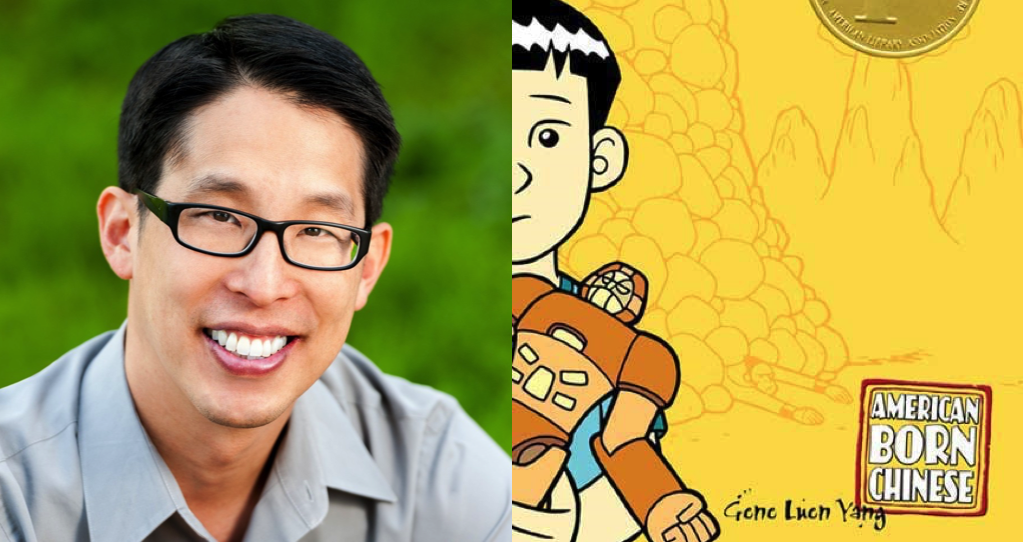
Gene Luen Yang on the Glories of Self-Publishing Comics
Two of the questions I get most frequently at Comic-Con panels, book signings, and other events are:
How do you get an agent?
How do you get a publisher?
I totally understand the spirit behind these questions. Very few of us artists want to do creative work only for ourselves. We want to share it with the world, and we’re not quite sure how.
I have to tell you upfront: comic books and graphic novels are not a great way to make money. If you love money, go into banking. You have to make comics for the sake of love — love of story, love of art, love of your readers. Be grateful for each and every person who takes the time to read to your work, whether it’s 200,000 people or 2,000 or two. This is something I struggle to do every day.
I’ve been in comics for twenty years now, but I’ve only been a full-time cartoonist for two. To get where I am, I’ve worked hard, but I’ve also been incredibly lucky, luckier than any one person has a right to be. All that is to say, comics is a hard business, so don’t get into it for just business.
I’m also no expert in publishing. All I really have to draw on is my own experience, so that’s what I’m going to describe to you now.
Twenty years ago, I began as a self-publisher. I would write and draw my story, then I would put it out into the world myself.
I handled self-publishing comics in three ways:
Mini-comics. Here’s how you make a mini-comic: Take your original pages to a local photocopy shop, run off fifty or a hundred copies, staple them by hand, and sell them by hand. You can sell them at local conventions or through local shops. Some shops may be willing to carry them on consignment, which means they’ll let you put your comic on their shelves for free. Then, if one sells, they’ll pay you a cut. You can trade your work with other creators and build friendships. At the end of the day, if you’re able to move a dozen copies, you’re doing okay. Many, many of us in kids’ comics today started off with mini-comics: Raina Telgemeier, Kazu Kibuishi, Jason Shiga, Ben Hatke, Dave Roman… I could give you a list as long as my arm.
Offset print comics. Offset printing is how big companies like Marvel and DC make their comics. You can do the same. I did my first offset print comic with Brenner Printing in Texas. They’ve been printing comic books for years, so they know what they’re doing. There are also countless local print shops that would do a great job. The advantage of doing things this way is that you get a comic book that looks the way most people expect a comic book to look. The disadvantage is that it’s a lot more expensive than mini-comics. I ended up losing a couple thousand dollars making my own offset print comics before I decided to quit. All that money from all that summer work, gone.
Webcomics. Webcomics were just starting to be a thing twenty years ago. I was part of a webcomics collective called Modern Tales, founded by a visionary guy named Joey Manley. (Joey passed away in 2013. The industry still misses him.) It was a lot of fun and it grew my readership by an order of magnitude. (Considering that my mini-comics only had a dozen readers, though, this is not as impressive as I’m trying to make it sound.) Since then, webcomics has grown into a universe. Publishing this way is still fun, but the webcomics universe is so big now that may be difficult to stand out.
I self-published using all three methods for years before getting picked up by a publisher. Self-publishing comics isn’t easy. It takes time and energy and focus. I was lucky enough to find a group of young cartoonists who were all starting off. We helped each other along, and I’m not sure I’d still be in comics if it weren’t for them. I strongly encourage you to look for a similar group of your own.
After having my work out there for a few years, publishers stopped looking at me askance when I approached them at conventions. They started using personal notes, rather than form letters, to reject me. And eventually, I was able to sign with a couple of them.
A cartoonist friend, whom I’d met through self-publishing, introduced me to my current publisher, First Second Books. After First Second offered me contract, another cartoonist friend, whom I’d also met through self-publishing, introduced me to my agent. By going to conventions and hanging out with other cartoonists for years, I became integrated into a community. I am where I am in my career today because of that community.
Self-publishing comics gives you an idea of the comics-making process from beginning to end. It can also help you find a community of like-minded creators. Nowadays, there are all sorts of self-publishing comics options that did not exist when I was starting out. You can get a comic that looks offset printed without the expense by using a digital printing service like Ka-Blam.com. You can also publish directly to e-book reading formats like Kindle or Nook or Issuu.
No matter how you get your comic out into the world, though, make sure you’re doing it for the right reason. Do it for the love.
Learn more about self-publishing here.













